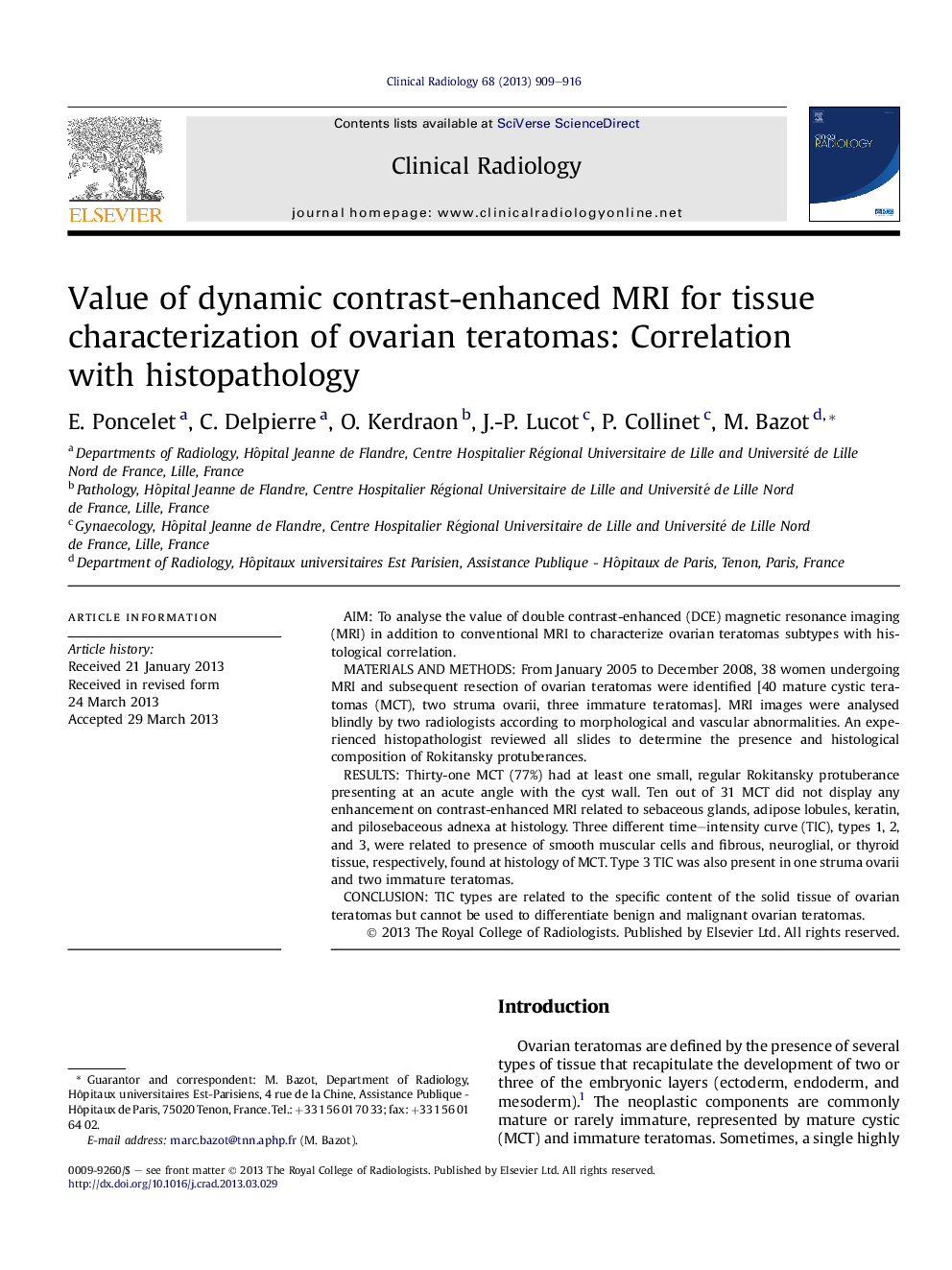| Article ID | Journal | Published Year | Pages | File Type |
|---|---|---|---|---|
| 3982551 | Clinical Radiology | 2013 | 8 Pages |
AimTo analyse the value of double contrast-enhanced (DCE) magnetic resonance imaging (MRI) in addition to conventional MRI to characterize ovarian teratomas subtypes with histological correlation.Materials and methodsFrom January 2005 to December 2008, 38 women undergoing MRI and subsequent resection of ovarian teratomas were identified [40 mature cystic teratomas (MCT), two struma ovarii, three immature teratomas]. MRI images were analysed blindly by two radiologists according to morphological and vascular abnormalities. An experienced histopathologist reviewed all slides to determine the presence and histological composition of Rokitansky protuberances.ResultsThirty-one MCT (77%) had at least one small, regular Rokitansky protuberance presenting at an acute angle with the cyst wall. Ten out of 31 MCT did not display any enhancement on contrast-enhanced MRI related to sebaceous glands, adipose lobules, keratin, and pilosebaceous adnexa at histology. Three different time–intensity curve (TIC), types 1, 2, and 3, were related to presence of smooth muscular cells and fibrous, neuroglial, or thyroid tissue, respectively, found at histology of MCT. Type 3 TIC was also present in one struma ovarii and two immature teratomas.ConclusionTIC types are related to the specific content of the solid tissue of ovarian teratomas but cannot be used to differentiate benign and malignant ovarian teratomas.
